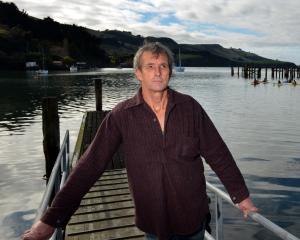
Nine meandering underwater canyons and hundreds of seabed "pock marks", each the size of four rugby fields, are among the major pieces of new information captured by Niwa's research vessel Tangaroa.
Scientists used a multi-beam echo-sounder and sub-bottom profiling to survey about 16,000sq km of ocean in July, creating, layer by layer, a highly accurate digital terrain model of the seabed.
Scientists always knew the canyons - like an underwater river system which transport sediment from the South Island far out to sea - existed, Niwa marine geologist Dr Helen Neil said yesterday.
"But we had always drawn them as fairly straight lines before, because we did not have the technology to draw them any other way. What is really amazing is we now have an intricate map, showing they are meandering ... and we have full coverage of the structure of the canyons and the slopes and levees and flattish seabed in between.
"This is pioneering stuff. Watching the layers building up and seeing the picture emerging was exciting."
Sediment settling on the seabed can trap oil and natural gas reserves beneath it. The sediment distribution system off the coast of Otago is the second-largest in New Zealand and commercial interest in its potential oil and natural gas resources prompted Niwa to bring forward the survey.
Dr Neil said the survey did not show oil or gas reserves "but that doesn't mean they are not there".
"This survey is the primary layer of information for people to pick up and use for further research studies, be that for conservation or exploration."
However, Niwa seabed ecologist Dr Ashley Rowden said yesterday the survey showed "hints of gas expulsion" and hundreds of seabed "pock marks" which indicated methane seepage.
They indicated the likely location of biological communities, rather than subsurface oil or natural gas reservoirs which could be tapped commercially.
Dr Rowden said little had been known about what animals lived in the deep parts of the canyon and he saw value in returning to further explore the area's biodiversity.
The Otago survey is part of a programme co-ordinated by Land Information New Zealand which is progressively mapping New Zealand's ocean territory, including the continental shelf and the Ross Sea region.



